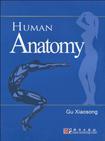人体解剖学
出版时间:2009-11 出版社:科学出版社 作者:顾晓松 编 页数:353
前言
Students :of the medical and allied sciences require a solid grounding in human anatomy if they want to fullyunderstand the key aspects of all medical courses and to pursue their future careers in health-related professions.The structure of the human body, as studied in human anatomy, represents not only an innate beauty of biologicalmachines essential for our lives, but a physical basis to determine how the body functions or goes wrong. Basedon this, the importance of human anatomy for medical education cannot be overestimated. This textbook, designed for a one-semester human anatomy course, is aimed to provide elementary knowl-.edge and basic concepts of human anatomy and to furnish an accessible framework of medical morphology forstudents majoring in medicine and other health-care programs. Although human anatomy is a classical subject inthe medical course system, the teaching of human anatomy has been greatly challenged in recent years due to anexplosion of information and an updating of ideas in medical science. To ensure enough knowledge to be learnedby students without necessarily increasing their learning time, we rely on the collective wisdom and combinedexperience of all authors to condense the subject essentials into this student-friendly text of 5 units, 19 chapters.The text contents are rigorously chosen to acquaint students with clear views on anatomical structures and relation-ships, and the text layout is ingeniously organized to allow each chapter to become a freestanding reading materialand yet to make different chapters well inter-correlated. Anatomy is a visual science, and the learning of it by students can benefit from ample illustrations with com-bination of aesthetic beauty and scientific accuracy in the textbook. The total 466 figures of high quality have beenincluded to integrate with the text. They are created based on measurements or observations of dissected materialsor by reference to the standard atlas from trusted anatomy bibles by skilled professionals among them some arerenowned artists. We believe that these artworks will enable students to build a pictorial insight into anatomicaldescriotions and to comorehend the issues that they find particularly difficult through the text reading.
内容概要
Dr. Gu Xiaosong is Professor of Anatomy at Nantong University, and serves as a doctoral mentor. He is currently the vice-president of Chinese Society for Anatomy Sciences and the president of Jiangsu Anatomy Society. As a nationally renowned instructor, he has long taught a broad spectrum of undergraduate and postgraduate students in the medical school. Dr. Gu Xiaosong is also the director of Jiangsu Key Laboratory of Neuroregeneration. His research interest focuses on neuroscience, especially neural damage and regeneration. He has obtained the National Science Fund for Distinguished Young Scholars, and taken charge of national and provincial natural science foundation programs. His academic achievements are manifested in many research articles and monographs, invention patents, and governmentissued prizes.
书籍目录
PrefaceINTRODUCTION TO HUMAN ANATOMYPART ONE LOCOMOTOR SYSTEM Chapter 1 Osteology Chapter 2 Arthrology Chapter 3 Myology PART TWO SPLANCHNOLOGY Chapter 4 General Description Chapter 5 Digestive System Chapter 6 Respiratory System Chapter 7 Urinary System Chapter 8 Reproductive System Chapter 9 PeritoneumPART THREE ANGIOLOGY Chapter 10 Cardiovascular System Chapter 11 Lymphalic SvstemPART FOUR SENSORY ORGANS Chapter 12 General Description Chapter 13 Visual Organ Chapter 14 Vestibulocochlear Organ Chapter 15 Other Sensory Organs PART FIVE NERVOUS SYSTEM AND ENDOCRINE SYSTEM Chapter 16 General Description Chapter 17 Central Nervous System Chapter 18 Peripheral Nervous System Chapter 19 Endocrine System
章节摘录
插图:(1)胸锁关节由锁骨的胸骨端与胸骨的锁切迹及第工肋软骨的上面构成。关节囊坚韧,囊内有纤维软骨构成的关节盘。属于多轴关节,允许锁骨外侧端向前、向后、向上、向下运动并可作环转和微小的旋转运动。(2)肩锁关节由锁骨的肩峰端与肩峰的关节面构成,关节活动度小。(3)喙肩韧带连于肩胛骨的喙突与肩峰之间,它与喙突、肩峰共同构成喙肩弓,架于肩关节上方,有防止肱骨头向上脱位的作用。(4)肩关节由肱骨头与肩胛骨关节盂构成。肱骨头大,而关节盂浅而小。关节囊薄而松弛,关节腔宽大。肱二头肌长头起于盂上结节,行于关节囊内。关节囊的韧带少且弱,囊的上壁有喙肱韧带。囊的下壁没有肌腱和韧带加强,最为薄弱,肱骨头常向前下方脱出。肩关节属球窝关节,为全身最灵活的关节,可作三轴运动:即屈伸、收展、旋内、旋外及环转运动。(5)肘关节由肱骨下端与尺、桡骨上端构成,包括三个关节:①肱尺关节;②肱桡关节;③桡尺近侧关节。上述3个关节包在一个关节囊内。肘关节囊前、后壁薄而松弛,后壁最薄弱,故常见桡、尺两骨向后脱位;主要韧带:①桡侧副韧带;②尺侧副韧带;③桡骨环状韧带。肘关节主要沿冠状轴上的屈伸运动。(6)桡骨尺骨间通过前臂骨间膜、桡尺近侧关节和桡尺远侧关节连接。参与前臂旋前和旋后运动。(7)手的关节包括桡腕关节、腕骨间关节、腕掌关节、掌骨间关节、掌指关节和手指关节。桡腕关节由桡骨的腕关节面和尺骨头下方的关节盘构成的关节窝与手舟骨、月骨和三角骨的近侧关节面构成的关节头相关节。关节囊松弛,关节的前、后、两侧均有韧带加强,其中掌侧韧带较坚韧,因而腕后伸运动受到限制。桡腕关节是典型的椭圆关节,可作屈伸、收展和环转运动。拇指腕掌关节由大多角骨与第工掌骨底构成,是典型的鞍状关节。关节囊松弛,可作屈伸、收展、环转和对掌运动。指骨间关节由各指相邻两节指骨的底与滑车构成,属典型的滑车关节。4.下肢骨连结(1)骶髂关节由骶骨耳状面和髂骨的耳状面构成。关节囊紧张,其前、后面分别有骶髂前、后韧带加强。关节后上方尚有强厚的骶髂骨间韧带。髋骨与脊柱间有髂腰韧带、骶结节韧带、骶棘韧带连接。骶结节韧带、骶棘韧带分别与坐骨大切迹、坐骨小切迹围成坐骨大孔和坐骨小孔。耻骨联合由两侧耻骨联合面借纤维软骨构成的耻骨间盘连结构成。在耻骨联合的上、下方分别有连结两侧耻骨的耻骨上韧带和耻骨弓状韧带。(2)骨盆由左、右髋骨、骶骨、尾骨及其骨连结构成。骨盆以界线为界,分为上方的大骨盆和下方的小骨盆。界线是由骶骨岬、骶骨盆面上缘、弓状线、耻骨梳、耻骨结节、耻骨嵴耻骨联合上缘构成的环形线。小骨盆分为骨盆上口、骨盆下口和骨盆腔。
编辑推荐
《人体解剖学(双语版)》由科学出版社出版。
图书封面
评论、评分、阅读与下载
用户评论 (总计7条)
- 英语水平还不到,不过结合图片和汉字还是能看懂个大概的.
- 英语太多,汉语比较少
- Thisbookissuit4me!!!!
- 边角褶皱 像被翻过很多次了
- 双语的这本还算可以,对于英文不是很精通的却要学的这个是帮助。在我们老师的推荐下买的,我看着比较好。
- 和中文教材对照着看 适合留学生用
- 书到后,才发现,教材不是我们需要的那种按中国式编写方式编写的全英文版,前者符合,但不是全英文,所以有很大的缺憾。希望以后进行书籍介绍时,更准确或详细点。
推荐图书
- UG NX 6.0中文版数控铣削
- 地基与基础工程技术交底范例1000篇
- 建设工程安全技术交底范例1000篇
- 建筑安装工程技术交底范例1000篇
- 建筑主体结构工程技术交底范例1000篇
- 室内空间徒手表现法
- 建筑装饰装修及屋面工程技术交底范例1000篇
- 邱德光的新装饰主义
- 道桥隧工程技术交底范例1000篇
- 0-1岁宝宝断奶餐
- 盘发造型设计
- 立体纸艺巧手做
- 孟老师的中式面食
- 承门易经筋推拿疗法
- 烽火昆仑
- 魂系昆仑关
- 广西重大改革纪实
- 小学生分类作文思维导图
- 初中生分类作文思维导图
- 小学生优秀作文思维导图
- 初中生优秀作文思维导图
- 初中生满分作文思维导图
- 小学生满分作文思维导图
- 小学生获奖作文思维导图
- 初中生获奖作文思维导图
